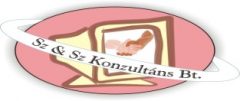Lots of people are drawn to the magical and intriguing world of tarot card analysis. Whether you are a skilled fortuneteller or a novice wanting to learn more about this old practice, comprehending the principles and methods of tarot reading can be a gratifying experience. In this comprehensive guide, we will certainly explore the history of tarot card cards, the symbolism behind the cards, and how to carry out a tarot card reading.
Background of Tarot Card Cards
Tarot card cards have a rich history that goes back to the 15th century in Europe. Initially utilized as playing cards, tarot card cards advanced right into a tool for prophecy and spiritual guidance. The deck is comprised of 78 cards, split into 2 primary groups: the Significant Arcana and the Minor oranum reviews Arcana.
The Significant Arcana consists of 22 cards that stand for substantial life occasions and spiritual lessons. These cards are commonly viewed as the “heart” of the tarot deck and hold deep meaning and definition. The Minor Arcana, on the other hand, includes 56 cards that focus on daily experiences and difficulties.
Throughout background, tarot card cards have been utilized by mystics, psychics, and people looking for support and insight into their lives. Each card in the deck brings its own unique energy and message, making tarot reading an psychicoz psychic readers effective tool for self-reflection and personal development.
- The Significant Arcana: Stands for considerable life events and spiritual lessons.
- The Minor Arcana: Focuses on daily experiences and obstacles.
Just how to Conduct a Tarot Card Reading
Before starting a tarot card analysis, it is very important to develop a spiritual and serene room where you can concentrate and connect with your instinct. Several fortuneteller choose to cleanse their deck by smearing it with sage or establishing an intent for the analysis.
As soon as you prepare to begin, shuffle the cards while concentrating on your concern or intent. You can pick to do a one-card analysis for fast understanding or a much more intricate spread for a deeper understanding of the circumstance. There are many different infect pick from, such as the Celtic Cross, the Three-Card Spread, or the Love Spread.
As you set out the cards, focus on your instinct and the significance on the cards. Each card has its own distinct significance and message, yet it is very important to pay attention to your inner voice and trust fund your instincts when interpreting the cards.
Translating the Cards
Translating tarot card cards can be a deeply personal and user-friendly process. Each card carries its own importance and message, yet it is up to the viewers to connect with their intuition and interpret the cards in such a way that reverberates with them.
When translating the cards, take note of the images, shades, and icons on the card. Take into consideration exactly how these elements relate to your inquiry or scenario and trust fund your reactions when translating the message of the card.
It is necessary to keep in mind that tarot readings are not set in stone and needs to be made use of as a device for self-reflection and support. The cards can use understanding and quality into your life, however it is ultimately up to you to choose and take action based on the details you get from the analysis.
Conclusion
Whether you are an experienced fortune-teller or a beginner looking to learn more regarding tarot cards, the art of tarot reading can be a powerful tool for self-reflection and spiritual assistance. By recognizing the history of tarot card cards, the symbolism behind the cards, and exactly how to perform a tarot card analysis, you can unlock the wisdom and insight that tarot cards have to supply.
